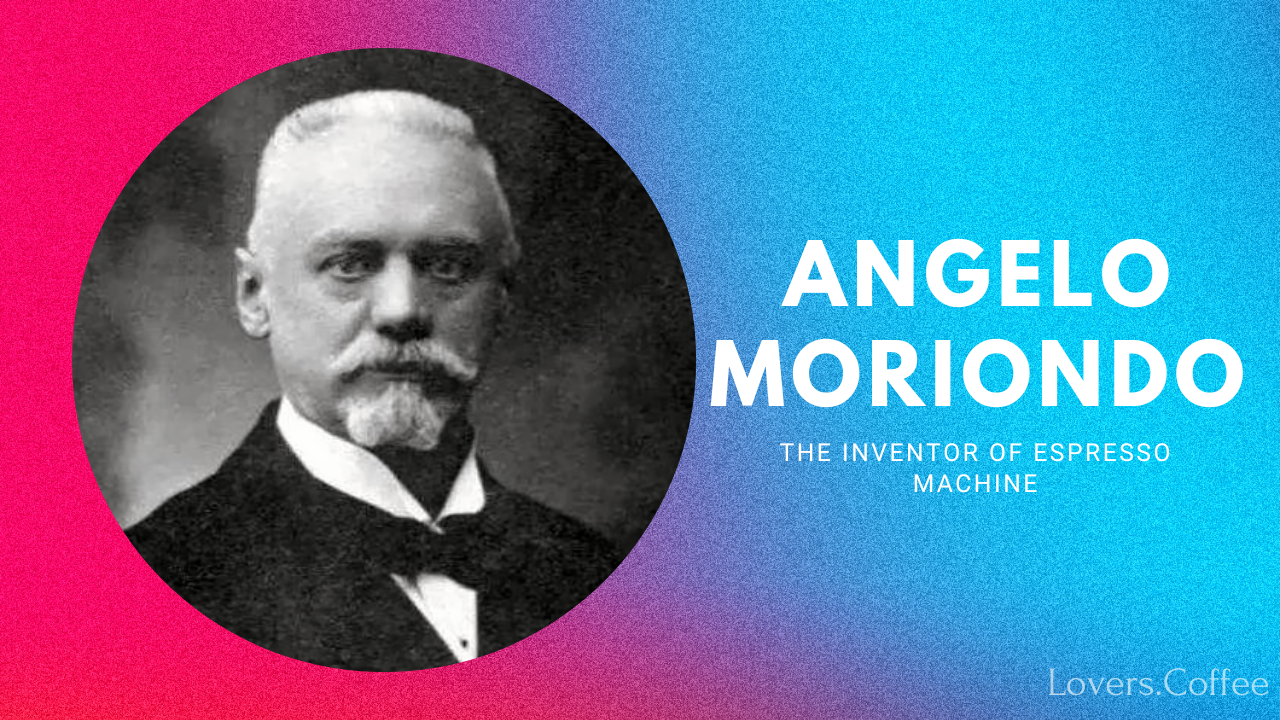
Angelo Moriondo: The Inventor of Espresso Machine
Angelo Moriondo: The Inventor of Espresso Machine
- Adam Smith
- 30-06-2022
- 29-07-2025
- 1662 views
- Featured Articles, Information

The development of espresso machines has been quite a journey. Starting with a giant machine that would occupy most of the room to the modern-day ones that can fit on your kitchen counter.
An Italian inventor named Angelo Moriondo is credited with the invention of these machines. These were originally patented in 1884 and took over two decades before they became mainstream across Europe. (source)
Angelo Moriondo was born in Pavia, Italy, in 1851 and died in 1914.
Inventing the Espresso Machine

Although Angelo is credited for patenting the first-ever espresso machine, he doesn’t have much to do with the history of espresso. That credit goes to Luigi Bezzerra and Desiderio Pavoni.
While it is not an entirely new invention, the espresso machine has become popular only within the last century. The device consists of two separate chambers: one where water is heated and the other where ground coffee beans are placed.
Once both chambers are filled with water at different temperatures and pressure levels, they are connected through a small hole in their centers.
This allows pressurized hot water to flow through finely-ground coffee beans before being released into your cup as freshly brewed espresso.
Angelo Moriondo had Always Been Intrigued by Steam and Its Ability to Drive Pressure

As a chemist, he was no stranger to the properties of water, but in order to make his idea work, he would need more than just hot water—he would need heat.
Moriondo owned a coffee shop in Turin and was well versed in making coffee through manual tools like grinders and percolators. After noticing that his customers were losing patience while they waited for a cup of coffee, Moriondo invented the espresso machine.
In short, he envisioned a machine that would use a steam engine to produce continuous streams of concentrated coffee.
The Innovations in Angelo Moriondo’s Espresso Machine
Luigi was the founder of La Pavoni, one of the first companies to produce and sell espresso machines. He took Moriondo’s design for a steam-powered espresso machine and made several notable improvements, including multiple brewheads and a portafilter.
In 1903, Pavoni bought Bezzerra’s patents and began to improve the design. He added a pressure release valve, among other changes. He designed this innovation to protect baristas from being splashed by hot coffee.
The Birth of Mainstream Espresso
Espresso was born from a new method invented by Luigi Pavoni that allowed for coffee to be made quickly. He named this process “espresso,” meaning “made on the spur of the moment,” and started marketing it to cafes in Milan.
As the popularity of the Pavoni coffee machine spread throughout Italy, competitors began to manufacture similar machines. These machines could produce at least 100 cups of coffee every hour, a marked improvement over the old method.
In 1961, a motorized pump was added to espresso machines, obviating the need for baristas to manually inject water into the coffee.
Thanks to the continuing development of new technology, espresso machines became smaller, more efficient, and affordable.
The espresso machine has a long history, but it revolutionized the way people drank coffee. It enabled the quick production of concentrated, delicious cups of coffee.
Conclusion
In conclusion, the espresso machine is a very important invention that has significantly impacted modern society. It has changed the way people consume coffee. And it made it possible for people to create new and interesting drinks, such as cappuccinos or lattes.
The history behind this invention is also quite fascinating because there was not just one person responsible for its creation. Instead, there were several individuals who contributed their ideas over time until we finally got what we have today!






















